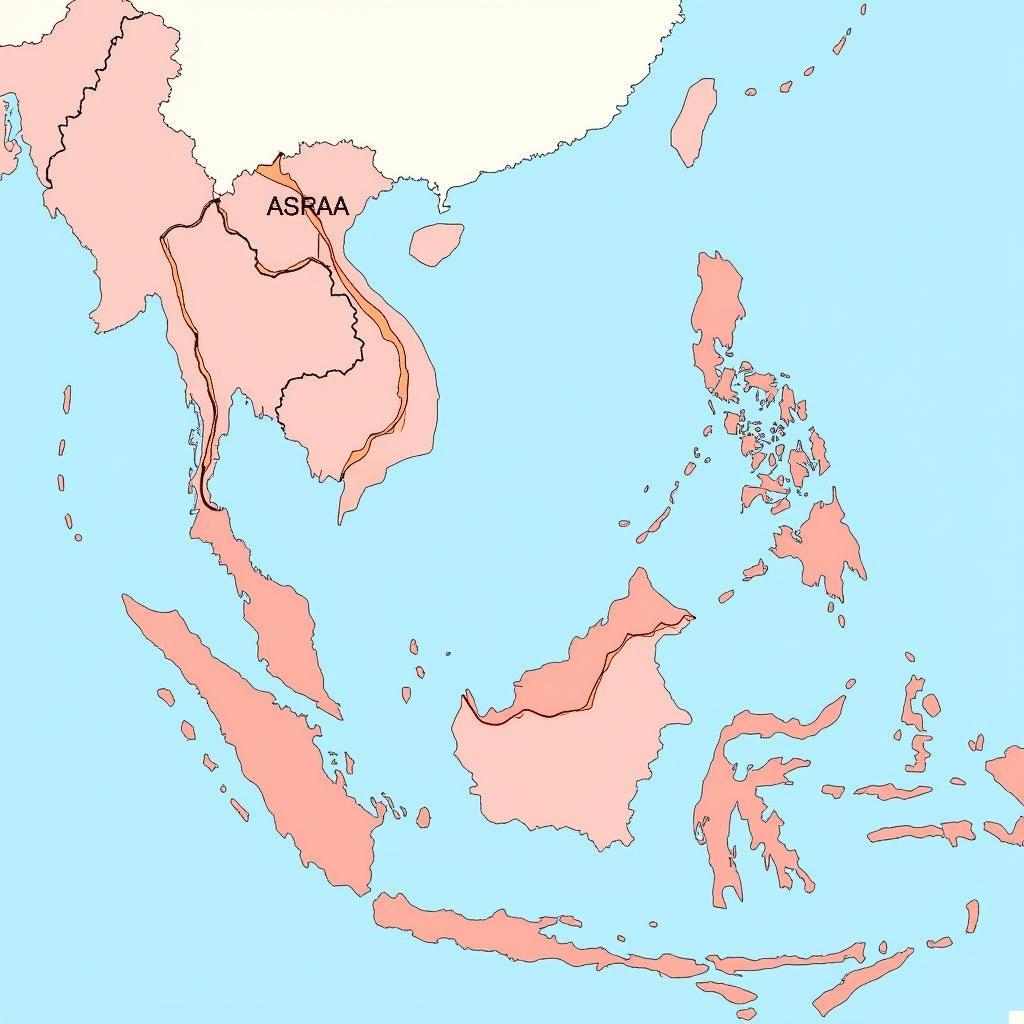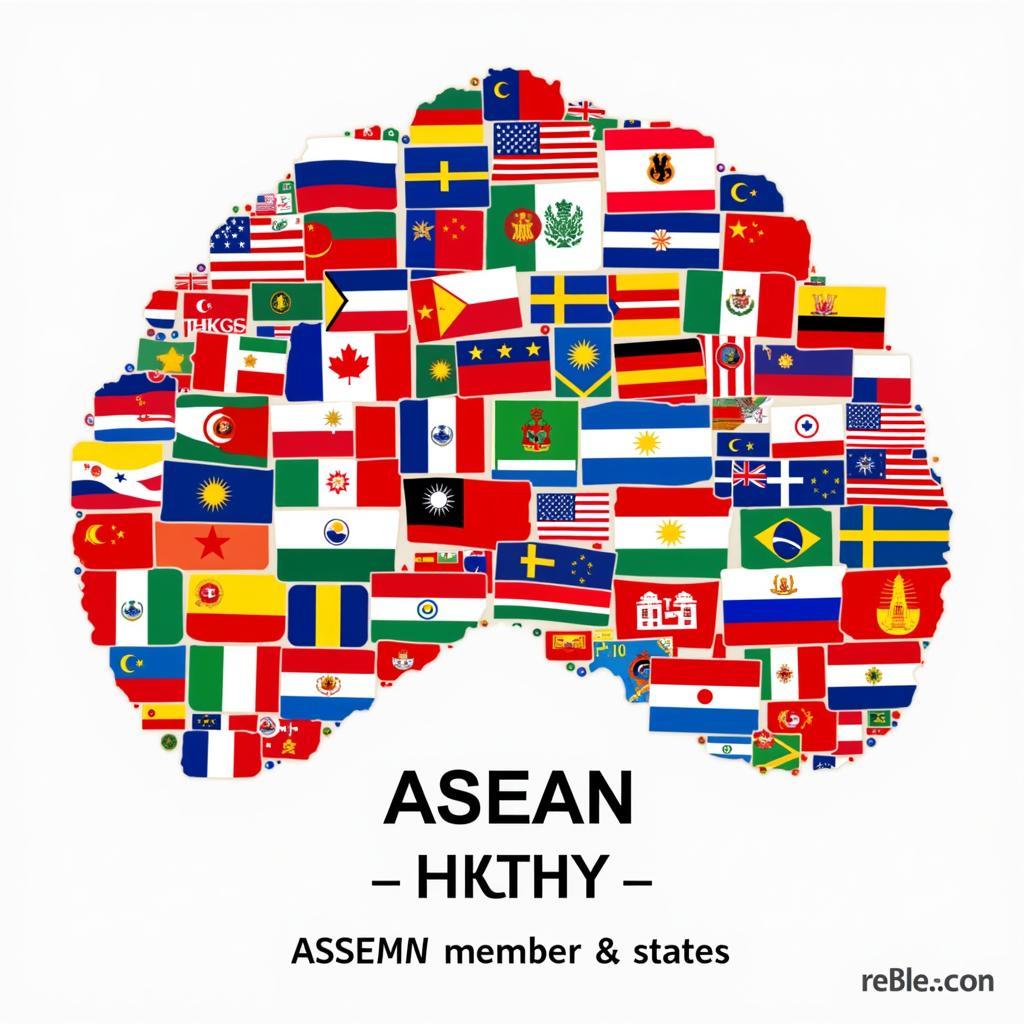The ASEAN trajectory, from its old format to its new, is a story of remarkable growth and adaptation. Within a few decades, ASEAN has transformed from a fledgling organization focused on regional security to a dynamic economic and political bloc actively engaging with global challenges. This evolution is reflected in its evolving structure, expanding membership, and increasingly sophisticated approach to regional cooperation. Let’s explore this fascinating journey.
Understanding the Shift: ASEAN Trajectory Old to New Format
The initial phase of ASEAN, what we can term the “old format,” was heavily influenced by the Cold War context. Founded in 1967 by Indonesia, Malaysia, the Philippines, Singapore, and Thailand, the association prioritized political stability and containment of communist influence. Economic cooperation was secondary, and the focus remained firmly on fostering dialogue and building trust among member states, many of whom had recently gained independence and were navigating complex geopolitical landscapes. adt ase key
The end of the Cold War marked a turning point in the ASEAN trajectory. With the diminished threat of ideological conflict, the focus shifted towards economic integration. The “new format” of ASEAN emerged, characterized by a proactive approach to trade liberalization, investment promotion, and regional connectivity. This new era saw the expansion of ASEAN’s membership to include Brunei Darussalam, Vietnam, Laos, Myanmar, and Cambodia, further solidifying its position as a key player in Southeast Asia.
 ASEAN Economic Growth Transition
ASEAN Economic Growth Transition
Key Drivers of Change in the ASEAN Trajectory
Several factors have contributed to the dramatic shift in the ASEAN trajectory. The rise of globalization, the increasing interconnectedness of regional economies, and the growing importance of Southeast Asia in the global landscape have all played a significant role. ASEAN recognized the need to adapt to these changing dynamics to remain relevant and effective.
Embracing Economic Integration
The formation of the ASEAN Free Trade Area (AFTA) in 1992 was a landmark achievement in the ASEAN trajectory. AFTA significantly reduced tariffs and non-tariff barriers among member states, fostering greater intra-regional trade and investment. This paved the way for further economic integration initiatives, such as the ASEAN Economic Community (AEC), which aims to create a single market and production base.
Expanding Regional Connectivity
asean 2015 peace Recognizing the importance of seamless connectivity for economic growth, ASEAN has prioritized infrastructure development and the harmonization of regulations. Initiatives like the Master Plan on ASEAN Connectivity (MPAC) aim to improve physical, institutional, and people-to-people connectivity across the region.
 ASEAN Connectivity Projects
ASEAN Connectivity Projects
Challenges and Opportunities in the New Format
While the new format presents numerous opportunities for ASEAN, it also brings its own set of challenges. Managing the diverse interests of ten member states, addressing issues of income inequality, and ensuring sustainable development are just some of the key challenges facing the association. “Navigating the complexities of regional integration requires a delicate balance of national interests and collective goals,” notes Dr. Anya Sharma, a prominent Southeast Asian economist.
Strengthening Institutional Capacity
To effectively address these challenges, ASEAN needs to strengthen its institutional capacity. This includes enhancing its decision-making processes, improving its ability to implement agreements, and fostering greater coordination among member states.
Engaging with Global Partners
amp ase ro ASEAN’s engagement with external partners has also become increasingly important in the new format. The association has established strategic partnerships with major powers like China, the US, Japan, and the EU, further enhancing its influence on the global stage. “Strategic partnerships are crucial for ASEAN to leverage external resources and expertise to address regional challenges,” adds Dr. Sharma.
The Future of the ASEAN Trajectory
The ASEAN trajectory continues to evolve, adapting to a rapidly changing global landscape. The association’s focus on innovation, digital transformation, and sustainable development will be critical for its future success. “Embracing new technologies and promoting sustainable practices will be key for ASEAN to achieve its vision of a resilient and prosperous community,” concludes Dr. Sharma. asea genesis
 Future of ASEAN
Future of ASEAN
In conclusion, the ASEAN trajectory from old to new format reflects a remarkable journey of transformation and growth. By embracing economic integration, strengthening regional connectivity, and engaging with global partners, ASEAN has positioned itself as a key player in the 21st century. While challenges remain, the association’s commitment to cooperation and its adaptive approach offer a promising outlook for the future.
FAQ
- What is AFTA?
- How has ASEAN’s membership changed over time?
- What are the key goals of the ASEAN Economic Community?
- How does ASEAN engage with external partners?
- What are the main challenges facing ASEAN today?
- What is the Master Plan on ASEAN Connectivity?
- How does ASEAN promote sustainable development?
Situations where these questions are frequently asked:
These questions are often asked in academic settings, business forums, international conferences, and media discussions related to ASEAN and Southeast Asian affairs. They also arise during policy dialogues, investment briefings, and cultural exchange programs.
Related Articles:
Need assistance? Contact us 24/7: Phone: 0369020373, Email: [email protected], or visit us at Thon Ngoc Lien, Hiep Hoa, Bac Giang, Vietnam.

